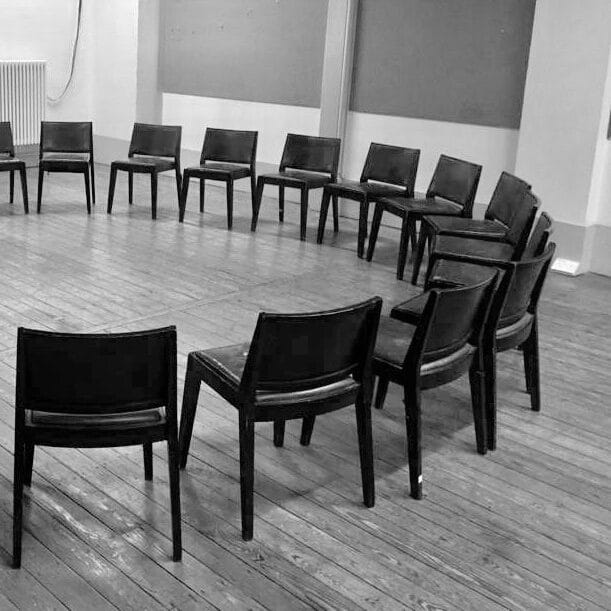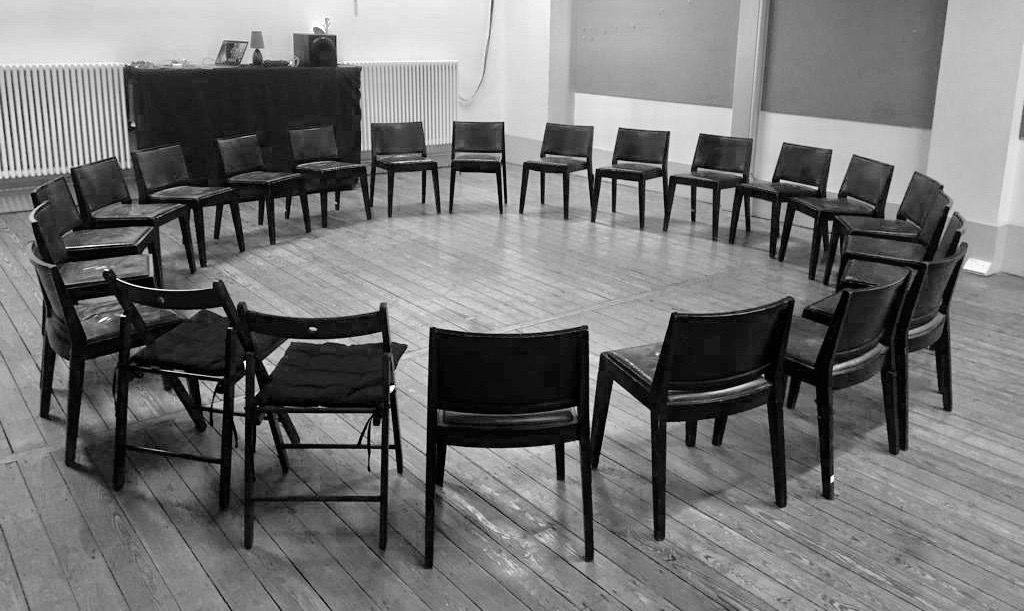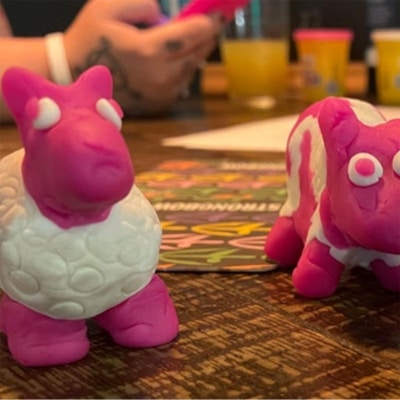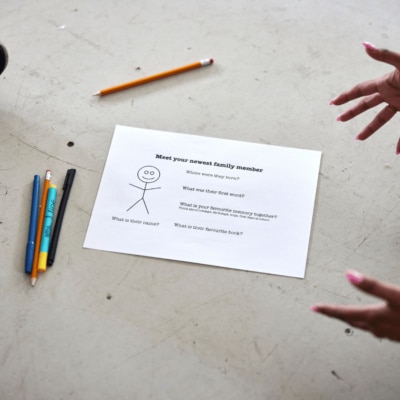A workshop with Áron Birtalan – Eliza writes
Posted on January 24th, 2020

On 10 January, Coney held a workshop about transformational practice, led by internationally renowned Artist and Transformation Games Practitioner, Áron Birtalan. Participants in the workshop ranged from theatre makers, game designers, directors, conservation specialists, mental health practitioners and more, gathering at the Old Library to step out of the everyday, to learn about and experience Áron’s work.
Here to share some of the day’s learnings is Eliza – read on to find out more about what was shared in the workshop.

•
We began the day with introductions, soon leaping into the first exercise that Áron had brought along; The Fountain. Lying on our coats in a giant circle, heads to the middle, toes pointing outwards like the head of a dandelion, we were instructed to listen to our surroundings. Gradually we were asked to imitate the sounds around us. As relaxation grew in the room, so did our laughter – slipping out as we eased into the exercise. Following suit, one person’s seemingly private giggle grew to raucous full-bodied laughter reaching the far corners of the ceiling.
After a short period of reflection, and another paired experience, we were invited to learn more about Áron’s practice.
Theoretically, the practice expands on the anthropological concept of ‘The Magic Circle’ – the creation of a space outside and separate from “mundane life”, which is free from the structures that we inhabit every day. The Critical Escape – as Áron calls it, is an escape from an essential “crisis of imagination” that characterises our modern lives. Within this space, we can experience social interaction, movement, play, in a different, less inhibited, and crucially – safe space. The Critical Escape is also a temporary escape, that constantly reflects back to everday life, and thus allows us to understand it from a different persective.
Before embarking on one of Áron’s Transformation Games – DIM (2017) – he took us through some of the history and origins of his practice. One part of this was his experience taking part in and now running his own children’s camp in Hungary. These camps function as children’s countryside kingdoms to which children come to spend time away from home and their structured lives. Time is spent; building worlds using codenames, creating ritualised days, and imbuing otherwise everyday objects and occasions with meaning to create artefacts and a heritage. Each created aspect can be overthrown or revolutionised by any player and any time, as players transform into new roles.
The first of these camps was founded in the 1930s – originating under and as an answer to the authoritarian state politics prohibiting youth group initiatives, such as scouts and alternative schools. It provided an answer to the society from which the children came, playing was to stay sane when subjectivity was being impoverished. New connections were created and old ones got rearranged. From this, new structures could emerge. Seen in Transformation Games practice, we begin from a state of stability, we undergo an unexpected encounter in a different space, which gives life to a state of conflict, from which new structures emerge.
Taking aspects of this vast and fascinating history, in conjunction with inspiration from Nordic Larp, Áron’s practice is a unique and fascinating perspective.
A favourite part of it for me, was the idea of designing the experience to begin the moment you first hear about it, moving into the experience itself, and encompassing landing back into one’s regular life – a workshop structure for which Áron has taken inspiration from Nordic LARP. Within this, is the importance of the experience remaining safe and consensual throughout. Information is laid out clearly at the outset, and time is built in to discuss and reflect on what we experience at the end.
When playing DIM in the afternoon – this became very clear. First, we were briefed about what the experience was going to entail. After this, we entered the “Workshop” phase, in which we start building the world of the game; developing the forms and shapes we were going to inhabit and rules of the space. Then came the “play out” where the world we had built in the workshop could come to life and be experienced, manipulated, experimented in. These first stages were non-verbal, but were followed by a debriefing session in which players could discuss their experiences, and slowly land back into the world outside the game.
After a day experiencing Transformation Games – one thing was clear to me. In this practice, as Áron puts it, “The experience is the artwork and the players themselves are the document.” Playing these games is for the experience – in that moment. The experiences are a way to recognise and remember that we self-direct transformation in our own lives. And, if we feel we don’t or feel like we don’t now, we can. A gift, waiting to be remembered.
•
A huge thank you to Áron for sharing his practice with us – find more about Áron and his work here.
Back to all posts




